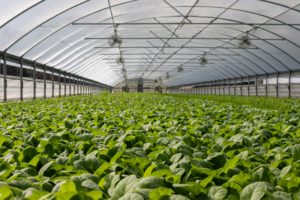Agriculture stands to gain more from technology than many other industries. Farming is critical to both an individual farmer’s livelihood and to the entirety of society. As such, everyone benefits from the agricultural sector adopting new technologies that optimize the farming process.
3D printing is revolutionizing the manufacturing industry, but it can offer several advantages to agriculture as well. While it has yet to see widespread adoption, 3D printing is becoming more common in farming circles and will likely continue to grow.
Here are five valuable applications for 3D printing in agriculture:
1. Manufacturing Tools
 One of the key advantages of 3D printing is customization. Custom tools can be expensive if manufactured traditionally, but 3D printing can create these products quickly and inexpensively.
One of the key advantages of 3D printing is customization. Custom tools can be expensive if manufactured traditionally, but 3D printing can create these products quickly and inexpensively.
If a farmer needs a specialized tool to perform a specific job, they can have one 3D printed one in as little as a day. This ease of customization allows farmers to accomplish even the most unusual tasks with greater ease and comfort. 3D printing wax or resin casts or patterns is the most affordable process for making tools but binder jetting with ExOne could also be used for this application.
2. Urban Farming
As the population grows and available land shrinks, urban farming is becoming more common. Indoor farms may have specific equipment needs. Due to their need to fit in the buildings that house them and make optimal use of available resources a lot of the parts can be custom parts. 3D printing can provide cost-effective solutions to urban farmers, in creating parts for things such as autonomous farming processes.
Urban agriculturists can print infrastructure such mounting brackets and light fixtures. 3D printing also allows for better prototyping, which is essential for a new, cutting-edge industry like indoor farming.
3. Scale Models
A growing farm will need new buildings, which are considerable investments. When planning structures like grain facilities, farmers need to design them carefully so construction goes smoothly and stays within budget. By 3D printing scale models of the structures they wish to build, they can make the planning process more comprehensive.
Farmers can use prototypes for more than construction. Using technology like LiDar, they can scan and create 3D models of their farmland to understand the area’s terrain better. These representations can highlight issues like erosion or catchment spots, which are zones where water collects from the surrounding land.
4. Replacement Parts
Farm equipment is specialized, and as such, it tends to be expensive. When a piece of machinery breaks or malfunctions, it can cost a considerable amount of money to get a replacement. 3D printing alleviates this concern. This is especially true for legacy out of production parts.
Manufacturers can produce spare parts in less time for less total cost with a 3D printer. Cost per part may be higher but they don’t have to keep the entire inventory for decades but can produce on demand. If a farmer has their own machine, they can create the part themselves using a design found online or by designing their own. Apart from saving money, this process conserves time, so farmers minimize equipment downtime while they wait for the part to finish.
5. Indoor Gardening
 In an increasingly urban world, indoor gardening may become more popular. Growing herbs and vegetables indoors can be an excellent way for people to save money and live sustainably. By using 3D printed gardening structures, agriculturists can make the most out of limited space.
In an increasingly urban world, indoor gardening may become more popular. Growing herbs and vegetables indoors can be an excellent way for people to save money and live sustainably. By using 3D printed gardening structures, agriculturists can make the most out of limited space.
By creating custom infrastructure to house the plants, people can fit gardens into smaller urban apartments. This strategy helps gardening enthusiasts — as well as people who want to grow their own food — decrease their carbon footprint.
Using Specialized Tech to Enhance Agricultural Techniques
3D printing is bringing a new world of innovation to the agricultural industry. If farmers adopt this technology on a broader scale, they’re sure to see improvements in their efficiency and revenue.
Subscribe to Our Email Newsletter
Stay up-to-date on all the latest news from the 3D printing industry and receive information and offers from third party vendors.
Print Services
Upload your 3D Models and get them printed quickly and efficiently.
You May Also Like
Nikon SLM Solutions Sells SLM 500 to Primary Weapon Systems to Expand Suppressor Production
Primary Weapons Systems (PWS) is a Boise, Idaho-based manufacturer of suppressors, firearms, and related components. A subsidiary of Vigilant Gear and a sister company to aftermarket Glock slide manufacturer Lone...
3DPOD 261: Tooling and Cooling for AM with Jason Murphy, NXC MFG
Jason Murphy´s NXC MFG (Next Chapter Manufacturing) is not a generalist service; instead, the company specializes in making tooling. Using LPBF and binder jet, the company produces some of the...
HP and Firestorm Labs Form Partnership to Use Multi Jet Fusion 3D Printers in Deployable Factories
HP Inc., maker of a range of additive manufacturing (AM) solutions including the Multi Jet Fusion (MJF) ecosystem, has announced a partnership with Firestorm Labs, a developer of containerized, deployable...
3D Printing News Briefs, July 2, 2025: Copper Alloys, Defense Manufacturing, & More
We’re starting off with metals in today’s 3D Printing News Briefs, as Farsoon has unveiled a large-scale AM solution for copper alloys, and Meltio used its wire-laser metal solution to...

































